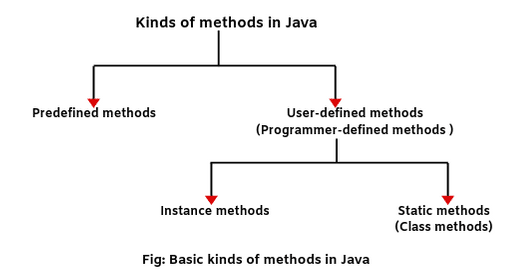What are the 4 basic things in Java?
What are the 4 basic things in Java?
I'd be happy to explain the four basic components of a Java program.
Classes and Objects: In Java, classes and objects are fundamental building blocks for programming. A class is essentially a blueprint or template that defines the characteristics and behavior of an object. An object is an instance of a class, which has its own set of attributes (data) and methods (functions). Classes can be used to encapsulate data and methods, making it easier to organize and reuse code.In Java, classes are defined using the class keyword, and objects are created by calling the new keyword followed by the name of the class. For example:
public class Car {
private String color;
private int speed;
public Car(String color) {
this.color = color;
}
public void accelerate() {
speed += 10;
}
}
Car myCar = new Car("blue");
myCar.accelerate(); // sets the speed to 10
Methods are defined within classes using the public or private access modifier. They can take parameters (arguments) and return values. For example:
public class Calculator {
public int add(int a, int b) {
return a + b;
}
}
Calculator calculator = new Calculator();
int result = calculator.add(2, 3); // returns 5
byte, short, int, long, float, double, boolean, and char. There are also reference data types such as arrays, collections, and objects.
Variables can be declared using the int keyword followed by the name of the variable. For example:
int myAge = 25;
String myName = "John";
Control structures are used to control the flow of a program and make it more interactive. For example:
int x = 5;
if (x > 10) {
System.out.println("x is greater than 10");
} else {
System.out.println("x is less than or equal to 10");
}
In conclusion, the four basic components of a Java program are classes and objects, methods, variables and data types, and control structures. These building blocks provide the foundation for writing efficient, readable, and maintainable code in Java.
Types of methods in Java

I'm sorry! Here's a detailed explanation of the various types of methods in Java:
1. Instance Methods: These are also known as non-static methods or non-pure virtual methods. They belong to an instance (object) of a class and can only be invoked on that object. Instance methods can access and modify the state of the object. Example: public void sayHello() in the Person class.
2. Static Methods: These are also known as class methods or static member methods. They belong to a class itself, not an instance of the class. They can be invoked without creating an object of the class. Static methods cannot access and modify the state of any specific object. Example: public static int add(int x, int y) in the MathUtil class.
3. Abstract Methods: These are declared in abstract classes or interfaces. They provide a template for subclasses to implement. Abstract methods do not have a body (implementation) and must be implemented by each subclass that inherits from an abstract class. Example: public abstract void play() in the Game interface.
4. Default (or Implicit) Methods: These are default methods declared in interfaces since Java 8. They provide a default implementation for a method that is declared in the interface. Subclasses can choose to implement their own version of the method if they want to override the default behavior. Example: public default void play() in the Game interface.
5. Overridden Methods: These are methods that are declared in a subclass and provide a different implementation for the same method declared in its superclass (or parent class). Overriding allows you to specialize the behavior of a method in a subclass. Example: public void play() in the ChessGame class overriding the default method from the Game interface.
6. Final Methods: These are methods that cannot be overridden by any subclasses. Once declared final, a method is essentially "locked" and cannot be modified or extended further. Example: public final void initialize() in the Singleton class.
7. Private Methods: These are methods that can only be accessed within the same class (encapsulation). They are not visible to other classes, making them private and secure. Example: private boolean isValidInput(String input) in the Validation class.
8. Nested Classes or Inner Classes: These are classes that are declared inside another class. The inner class has access to the variables and methods of its enclosing class. This concept is useful for hiding complex implementation details from outside the enclosing class. Example: public class Calculator { public class HelperClass { ... } }.
In conclusion, Java offers a variety of method types to accommodate different needs and use cases in programming. Understanding these differences helps developers create robust, maintainable, and reusable code.
I hope this helps!





























